EPD hits from secondary tracks fds
EPD hits from secondary tracks in simulation
Roland Pinter and I analyzed the ~600 MC (HIJING+GEANT with EPD) events Prashanth created. These contain particles from HIJING, tracks from GEANT, and the created EPD hits.
Vertices of HIJING's particles
First of all, we checked vertex (creation point) of the particles in HIJING (in the z-t and x-y planes, all units in centimetres, i.e. time is multiplied by the speed of light):
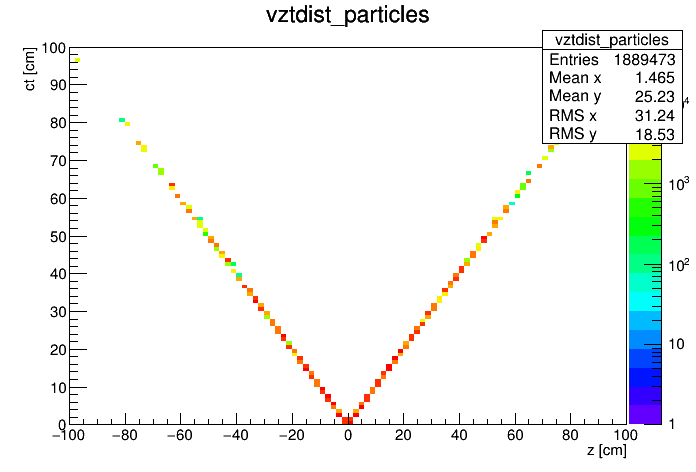
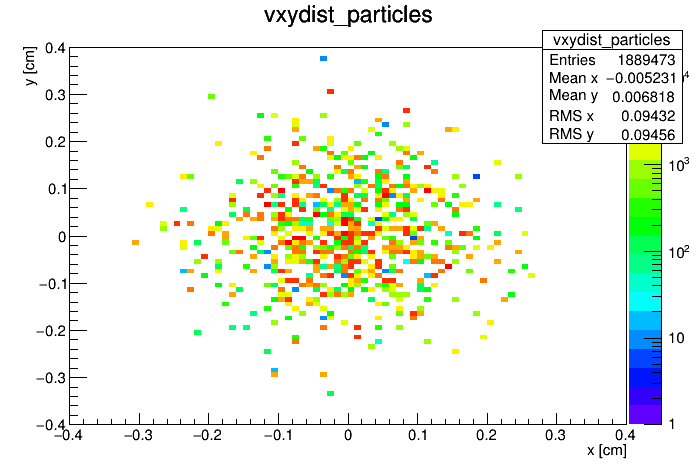
These are clearly created near x=y=0, along a light cone in z and t. I'm not sure though this makes sense from a physical point of view, as I really don't think there is any scattering this late. And these cannot be decays, as that would not just be in the z direction, but in the x-y as well. Can these be evaporated spectator neutrons? Seem to be too many for that. Or is this corresponding t the z-vertex of the collision? But why is then also the time shifted?
It is also strange, that the x-y scatter plot contains distinct points with many thousands or ten thousands of entries, and then nothing at other points. Are these points corresponding to separate events probably?
Vertices of tracks creating hits in EPD
Next, we ran through the tracks which create the hits in EPD, and cheched their vertex distribution (in the z-t and x-y planes, all units in centimetres, i.e. time is multiplied by the speed of light). The below plots show this, with the magenta lines/circles showing the EPD (at z=+-375 cm, and two circles at 4.5 cm and 90 cm):
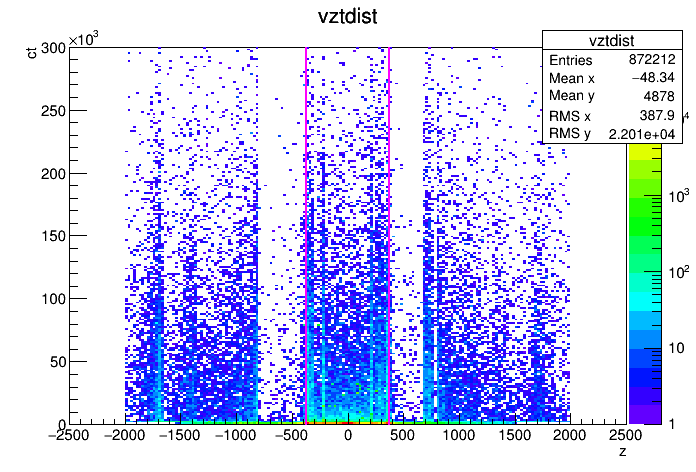

One strange thing immediately visible is the large rectangle. I have no idea what this is. The circles are also interesting. Note also (from the stat box), that we have 870k tracks on these plots. Now let us zoom in on these:
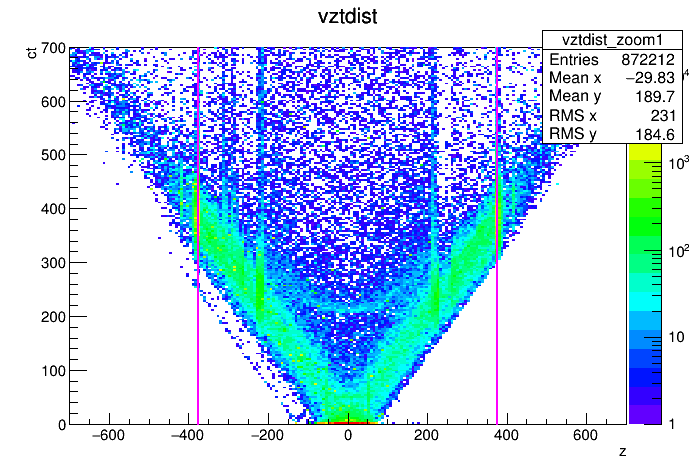

These plots suggest, that the EPD creates some tracks, but some other material as well. Let us make one more zoom:
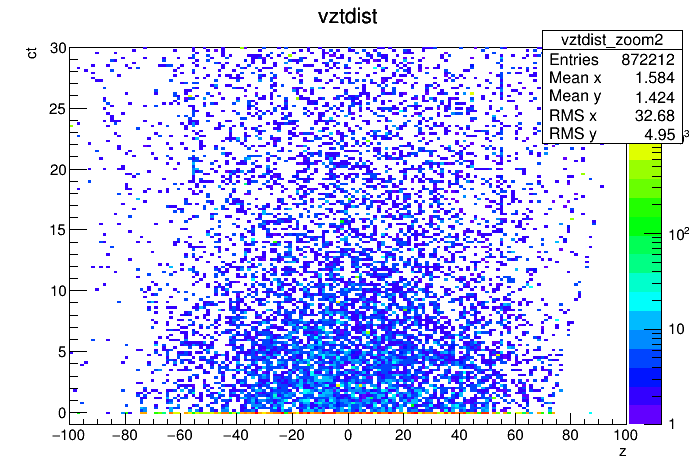
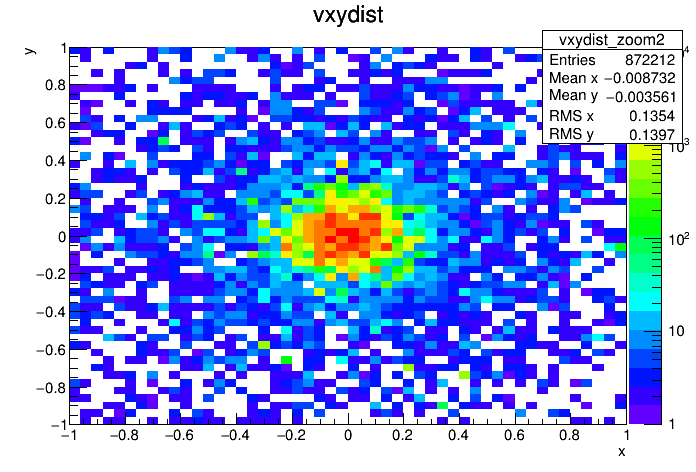
These seem to show primary tracks, most probably, although I'm not sure it makes sense that tracks are created at times of 10-20-30 cm/c. This may be a subtlety of GEANT, I'm not sure.
Vertices of tracks creating hits in EPD - different zoom levels in the x-y plane
Let us recapitulate how the transverse plane looks like, as on different zoom levels, different structures are seen:
.png)
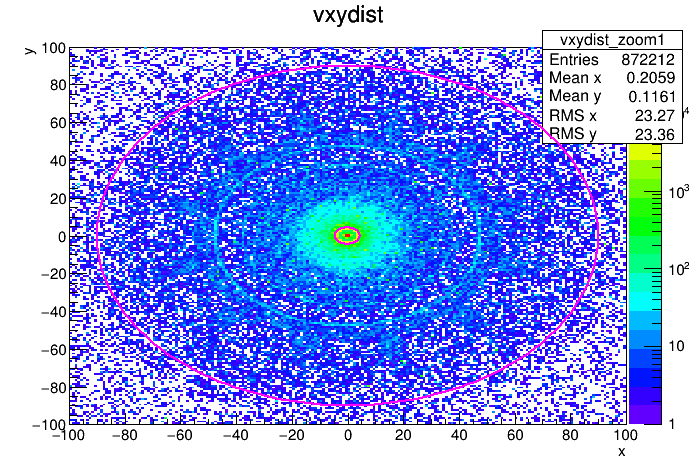
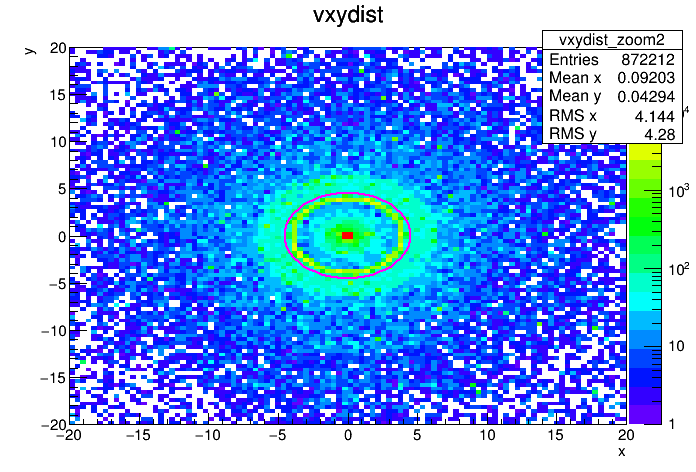
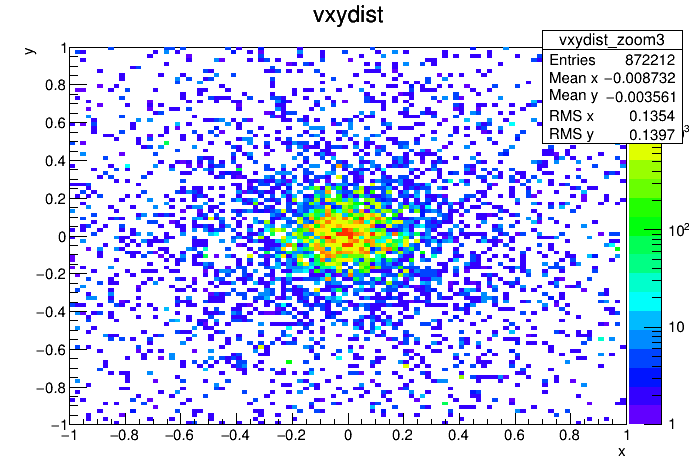
It is interesting how on the second plot, nice star like structure is seen at a radius of 50 cm. Also, it is interesting how the last plot shows well separated peaks, each of a height of ~10,000, but well separated.
Vertices of secondary tracks creating hits in EPD
Next, we checked what happens if we only look at secondary tracks. Secondary tracks can be defined as a track which has a mother track within GEANT - primary tracks don't have one. The above plots for these are listed below (left is z-t, right is x-y; the rows are different zoom levels).
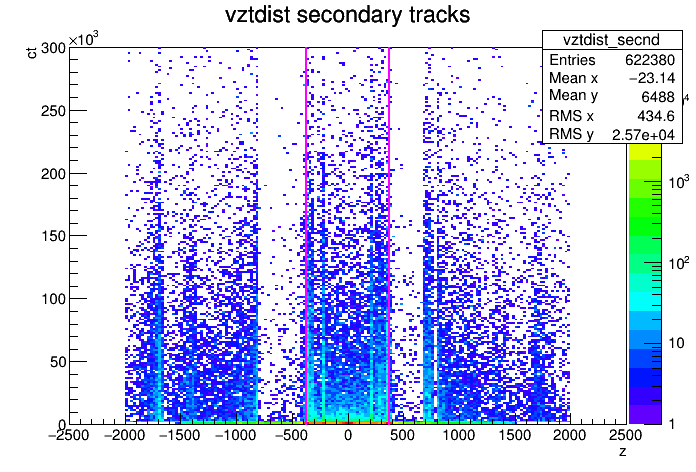


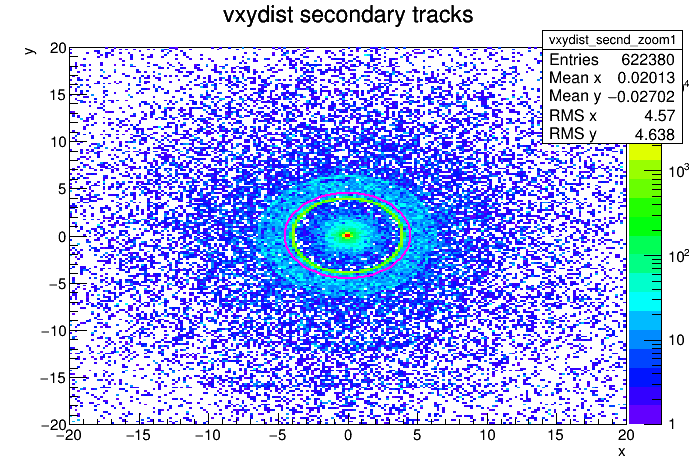

.png)
One thing immediately clear is, that while before we had 870k tracks, now we have 620k, so around 70% of the tracks seem to be secondary. It is also clear that the structures are still there, so these are indeed caused by secondary tracks.
Vertices of primary tracks creating hits in EPD
Now let us investigate primary tracks (with no mother track, i.e. mother track ID = 0).
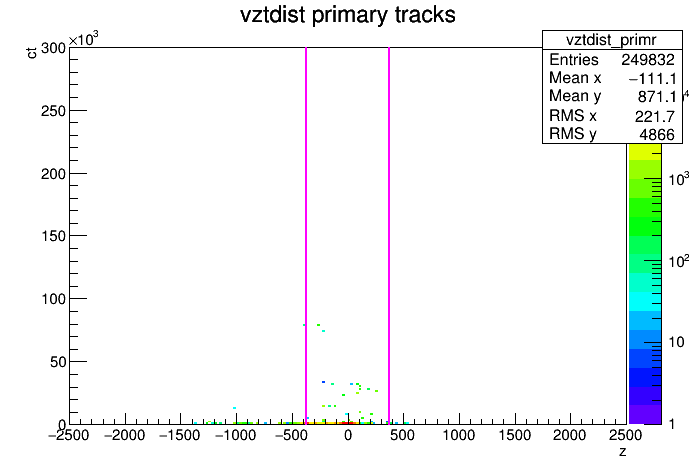
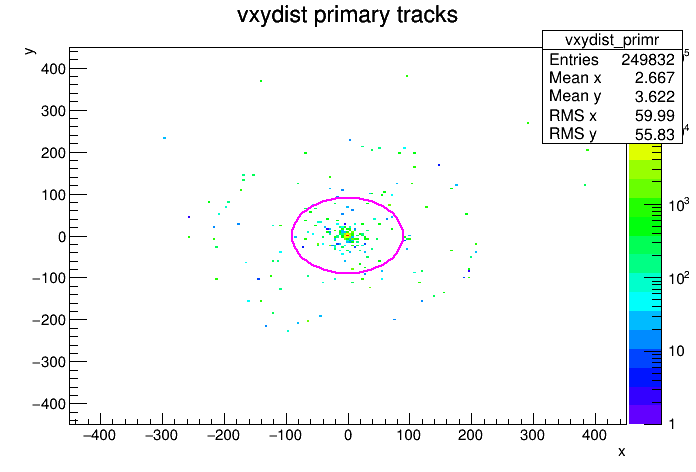
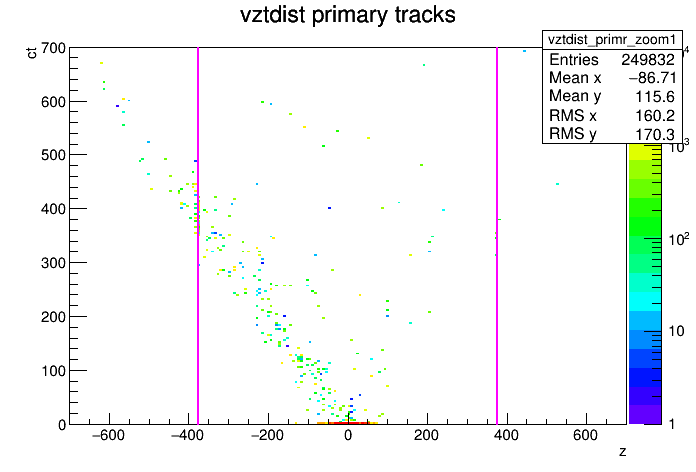
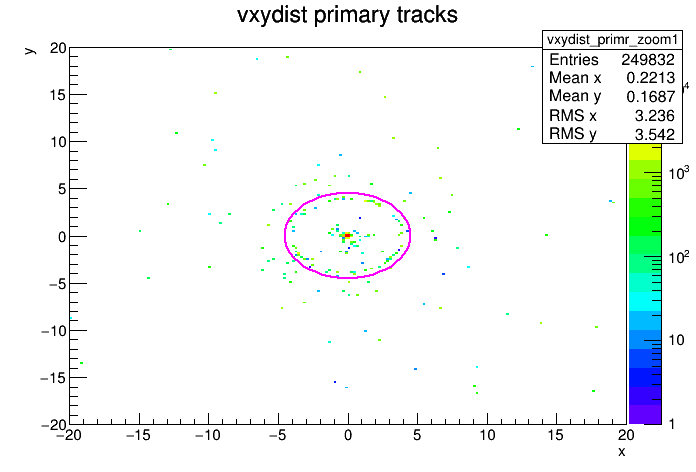
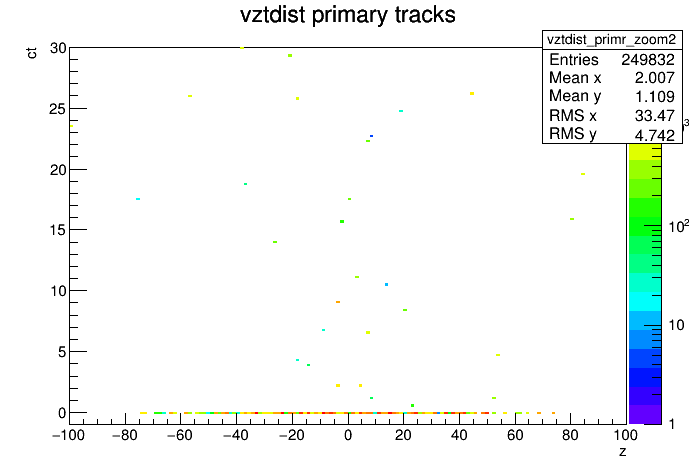
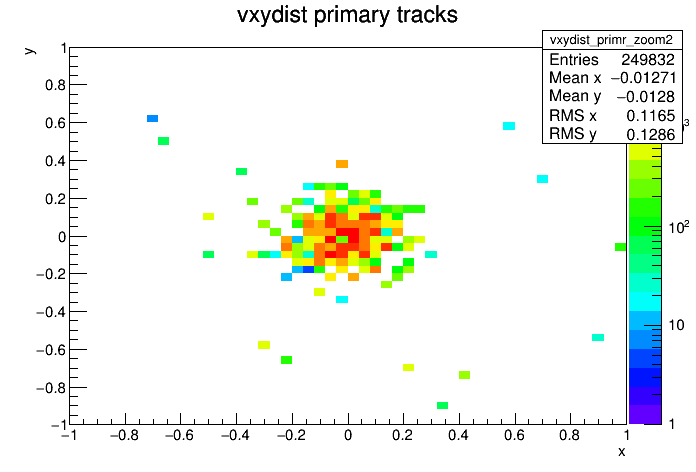
On these plots, we can confirm that the remaining 250k (out of 870k) are primary tracks. It is furthermore clearly visible, that:
- These tracks are much more concentrated to (x,y)=(0,0) (and the distribution is very similar to the one from HIJING) and also their time is mostly z=0
- The z distribution goes from -80 to 60 roughly, corresponding to the original HIJING setting of -100,+100 (as indicated by Prashanth earlier).
- There are still some strange structures, i.e. a circle at the outer EPD radius, a -z going light cone half
- There are primary (?) tracks created at large distances, but always many of them at one location (note the color axis, and that these single points at some coordinates are never purple (corresponding to 1 entry)
Technical note
For 169 tracks (i.e. 0.02% of them), there is a track ID mismatch: for a given EPD hit (say, of number ihit in the given event), the value of fEpdHits_fEpdHitTrackId[ihit] gives the track it is associated with. Let us define trackid=fEpdHits_fEpdHitTrackId[ihit]. Then for this track, fTracks_fId[trackid] should be the same as trackid+1. However, for 169 tracks, it isn't, as the fTracks_fId[trackid] is 99999. This is not an important issue, just wanted to note it here.
- mcsanad's blog
- Login or register to post comments
